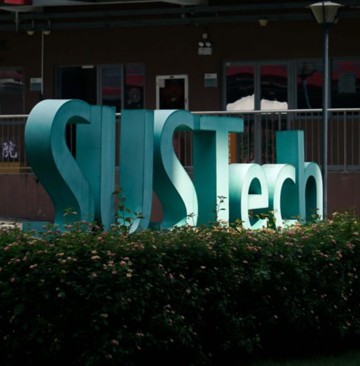SUSTech Zuotai Zhang's team makes advanced progress in solid amine CO2 capture materials
China is an active participant in global climate governance and insists on promoting CO2 mitigation. General Secretary Xi Jinping put forward the ambitious goal of striving to achieve carbon neutrality by 2060 at the 75th United Nations General Assembly. The development of CO2 capture and storage (CCS) technology can avoid CO2 emissions from industrial emission point sources and reduce the CO2 already in the atmosphere. It is an important part of achieving the goal of “carbon neutrality”, and is of great significance for deep decarbonization, large-scale production of low-carbon hydrogen energy, low-carbon power supply, and realization of negative emissions.
Recently, Professor Zuotai Zhang and Research Assistant Professor Feng Yan from the School of Environmental Science and Engineering (ESE) at the Southern University of Science and Technology (SUSTech), innovatively prepared a series of low-cost, green, and efficient porous nano-SiO2/Al2O3 supported solid amine CO2 adsorbents using solid waste as the main raw materials. These results have been published in the well-known journals of Environmental Science & Technology and Chemical Engineering Journal in the environmental and energy fields.

Figure 1. Preparation and carbon neutralization application of solid waste-derived nano-Al2O3 supported solid amine CO2 adsorbents
The porous nano-Al2O3 support was firstly synthesized from high-aluminum coal fly ash, and the active PEI was then impregnated on the nano-Al2O3 support to prepare the solid amine CO2 adsorbent, which possessed a superior CO2 adsorption capacity of 136 mg·g-1. Significantly, this solid amine CO2 adsorbent showed stable adsorption capacity even regenerated under the pure CO2 atmosphere, and its CO2 adsorption capacity still maintained as high as 111 mg·g-1 adsorbent after 10 cycles, which was 5.5 times higher than that of traditional nano-SiO2 supported solid amine adsorbents. Therefore, this technical route, which can realize the high-value utilization of coal fly ash and significantly improve the cyclic stability of solid amine adsorbent regenerated under the pure CO2 atmosphere, has broad application prospects in CO2 capture and separation processes such as industrial source CO2 capture and biogas upgrading. This research, entitled “Highly efficient and stable PEI@Al2O3 adsorbents derived from coal fly ash for biogas upgrading”, was published in the Chemical Engineering Journal.
On this basis, the research group continued to study in-depth the interaction mechanism of support-organic amine and the anti-urea chain formation mechanism of nano-Al2O3 supported solid amine CO2 adsorbents. The results have shown that the unique cross-linking reaction between nano-Al2O3 support and organic amine molecules significantly inhibited the formation of urea chains in nano-Al2O3 supported solid amine CO2 adsorbents during the cyclic adsorption-regeneration process, thereby greatly improving the cyclic stability of CO2 adsorption capacity.
The study further verified the long-term cyclic stability of nano-Al2O3 supported solid amine CO2 adsorbents, whose adsorption capacity decreased by only 29% after 100 cycles regenerated under the pure CO2 atmosphere. This work not only clarifies the CO2 adsorption cycle stabilization mechanism of nano-Al2O3 supported solid amine CO2 adsorbents, but also provides design ideas for the development of new high-stable solid amine CO2 adsorbents with anti-urea properties. This research, entitled “Biogas Upgrading via Cyclic CO2 Adsorption: Application of Highly Regenerable PEI@nano-Al2O3 Adsorbents with Anti-Urea Properties”, was published in Environmental Science & Technology.

Figure 2. The cross-linking mechanism between nano-Al2O3 support and organic amine molecule
Chunyan Li, a master’s student from the ESE at SUSTech, and Xuehua Shen, a doctoral student supported by the joint Ph.D. program between SUSTech and Harbin Institute of Technology (HIT), are the first authors of these two papers, respectively. Professor Zuotai Zhang and Research Assistant Professor Feng Yan from the ESE at SUSTech are the co-corresponding authors. SUSTech is also the first affiliation and communication affiliation of these papers.
These studies were supported by the National Natural Science Foundation of China (NSFC), the National Key R&D Program of China, Shenzhen Science, Technology and Innovation Committee (SZSTI), and the Pearl River Scholars Funding Program for Higher Education Institutions in Guangdong Province.
Paper links:
Chemical Engineering Journal link: https://doi.org/10.1016/j.cej.2020.128117
Environmental Science & Technology link: https://doi.org/10.1021/acs.est.0c07973
